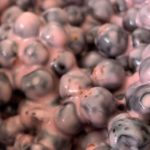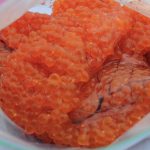Overview
In Nunavik, the availability of traditional food varies according to natural cycles such as plant growth and the migration of animals. When Nunavimmiut have access to berries and Arctic char eggs (suvait) (both are harvested in the fall, but stored and used throughout the year), they prepare suvalik.
Suvalik is a creamy and sweet emulsion, made from fish eggs (suvait), oil (ursurutik) and water (imaq). Berries are then added to the mix. Learning how to prepare suvalik requires skills and techniques that are passed on within Inuit families.
In addition to reinforcing students’ positive attitudes to sharing of food with their community1, the preparation of suvalik is an ideal activity to explore the concepts of homogeneous and heterogeneous mixtures (including colloids). By revealing the physical phenomena that occurs when preparing suvalik, students can better understand the importance of techniques and the ingredients needed to make it.
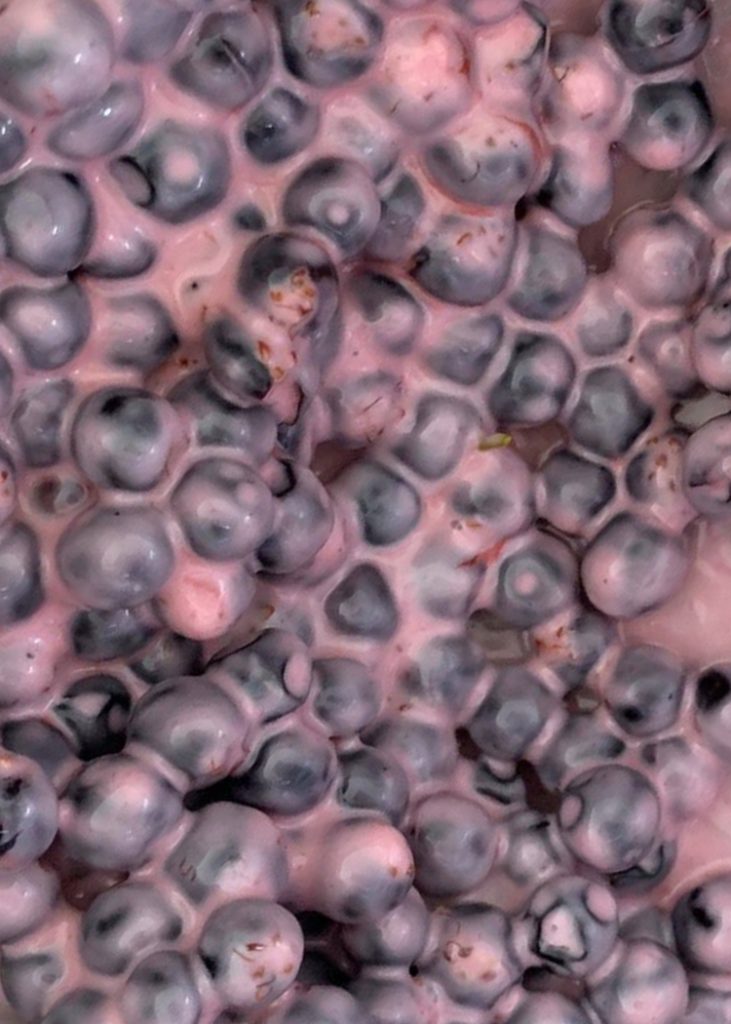
Corroborated learning outcomes
By learning how to prepare suvalik and by making observations in the laboratory, students will develop their ability to mobilize a variety of meaningful approaches to discover the scientific and technological universe.
On the one hand, when students are preparing the emulsion of suvalik, they will understand how the ingredients (including the important stabilizing agent lecithin in fish eggs) and the techniques they use (releasing the oil in the solvent water) influences the result, since they made the observations suggested in this lesson.
On the other hand, students will not only have learned about homogeneous and heterogeneous mixtures (including colloids) and physical transformations, but they will have a repertoire of concrete examples that they have been able to observe and manipulate.
Knowledge
Students will know…
- the ingredients of an emulsion like suvalik including the stabilizing agent (lecithin in the fish eggs), the solvent (water) and the dispersed liquid (oil);
- the differences between the homogeneous and heterogeneous mixtures (including colloids);
- the differences between physical and chemical transformations.
Skills
Students will be able to…
- prepare an emulsion (suvalik) by releasing oil in the solvent (water) with vigorous mixing;
- use a microscope;
- make a precise and patient observation.
Attitudes
Students will show…
- patience;
- perseverance;
- pride and promotion of their culture;
- willingness to learn new approaches.
Flow
1. About suvalik
45 minutes in class or in the kitchen
Qaujivalliajuq?: the emergent learner listens and observes how to prepare suvalik.
Invite to the classroom a member of the community who has developed a certain expertise in preparing suvalik. Ask them to share what they know about suvalik with your students and to demonstrate the techniques needed to prepare it. In preparation for this session, you can learn more about suvalik by reading the interviews on the topic.
Students will observe the different steps in the preparation of suvalik. After the demonstration, invite them to discuss and note their observations about the appearance of the mixture throughout the various stages.
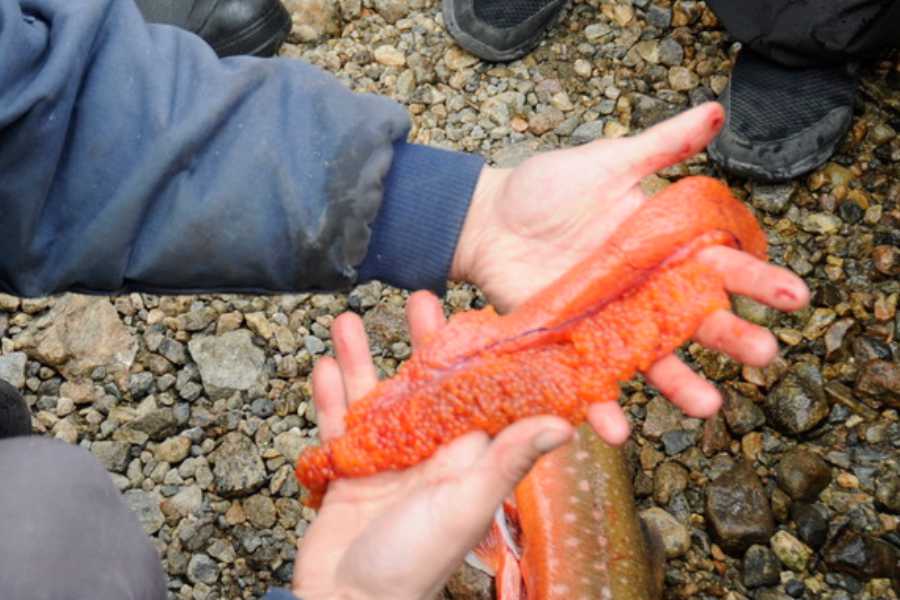
After this demonstration, ask students to reflect on what they have seen.
- Why does the mixture have to be shaken so vigorously?
- Why is the oil or fat added in small doses?
Using your own examples, teach students what a physical transformation is. They will observe later on in this lesson that the preparation of suvalik is a physical transformation of ingredients.
2. Macroscopic observations
45 minutes in class
Qaujivalliajuq?: the emergent learner identifies regularities between the preparation of suvalik and an experiment.
Before asking students to prepare their own suvalik, they will learn about certain properties of mixtures that are observable during preparation.
Using your own examples, teach them the differences between homogeneous and heterogeneous mixtures (including colloids).
Then, help students to reflect on the mixture of eggs and oil.
- Why is it difficult to mix them together?
- Why is it necessary to shake them so vigorously?
Students will carry out a short experiment with the main components of suvalik: oil and water (contained in the eggs). In a test tube, students will mix a small quantity of water and oil. They will observe what happens and will draw this observation in the student handout. Then, students will vigorously shake the mixture and observe and draw what happens. Finally, students will let the mixture rest for 5 minutes before making a final observation and drawing.
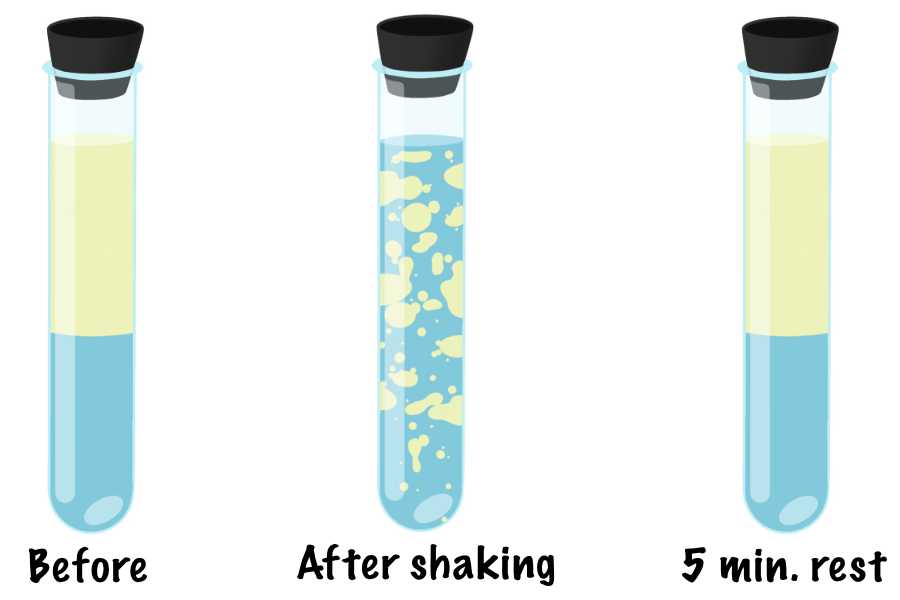
This experiment allows students to visualize, from a macroscopic point of view, that the simple act of pouring oil into water (solvent) does not form a mixture like suvalik. They will go on to learn that a stabilizing agent (like lecithin contained in the fish eggs) is necessary in the preparation of an emulsion. This helps them understand why it is an art that requires practice.
3. Microscopic observations
45 minutes in class
Tukisilirtuq?: the transitional learner uses new skills with uncertainty and needs support.
Students will now prepare suvalik by following the recipe you provide. Use the recipe shared by your guest, ask your students to share their own recipes or use the recipes suggested in this lesson. If possible, divide your group in two. Half will use seal fat and the other half will use Crisco oil. These are the oils used by ancient and modern tradition.
Go back to the question raised in the previous activity. How do you mix oil and water (contained in eggs) to make suvalik once students have observed the mixtures separate in test tubes? The answer lies in the stabilizing agent contained in the fish eggs: lecithin. That is why is it important to crush the fish eggs with your fingers to extract it before you start stirring the mixture.
Students can now observe, using a microscope, how it is possible to prepare suvalik using oil and water, which were previously so difficult to mix. To do this, students will have to take samples of their emulsion (suvalik) at different stages of preparation. These samples will be observed under a microscope. We suggest making these observations:
- Once the eggs have been crushed (qaarisugit)
- 10 minutes after agitating the mixture
- 20 minutes after agitating the mixture
Emulsions will have a more homogeneous appearance to the naked eye. However, under the microscope, students will notice that the mixture remains heterogeneous and that the drops of fat become increasingly smaller as the emulsion develops. In practicing how to make suvalik, students will have the opportunity to visualize this very special heterogeneous mixture known as a colloid, present here in the form of an emulsion.
If you were able to prepare both recipes with your group, ask students to compare the methods from a macroscopic and microscopic point of view… and from a taste point of view!
Assessment
By learning how to prepare suvalik and make observations in the laboratory, students will have developed their competency to mobilize a variety of meaningful approaches to discover the scientific and technological universe.
We suggest making the learning outcomes visible through a series of questions that can be administered in the form of a questionnaire, interview, discussion, etc.
- What are the steps involved in preparing suvalik and how important are they?
- What are the ingredients in suvalik and what is their role in preparing the recipe?
- Is suvalik a homogeneous or heterogeneous mixture? Explain why.
- What are the determining factors of success or failure in the making of suvalik?
Expectations
All
All students are in a transitional stage (tukisilirtuq?) where learning is understood and applied, sometimes with help, in the same context in which it was realized.
All students…
Most
Most students are in the communicative stage (tukisinarsilirtuq?) where learning is applied by choice and consciously in familiar contexts.
Most students…
- will be able to follow the recipe and prepare suvalik;
- will be able to describe suvalik as a heterogeneous mixture, based on their macroscopic and microscopic observations;
- will be able to justify that this transformation is physical, despite an overall change in appearance, through their observations.
Some
Some students are more advanced in the communicative stage (tukisinarsilirtuq?) where learning is internalized and can be accurately described in a variety of familiar contexts.
Some students…
Extensions
Working with other competencies
Once students understand the physical transformations that enable the preparation of suvalik and have a solid grasp of the concepts of homogeneous and heterogeneous mixtures (including colloids), they can apply this knowledge in an authentic problem-solving situation. In fact, the competency to make choices that benefit themselves and their community by using their knowledge of the scientific and technological universe? can be demonstrated when students adjust their techniques or correct the suvalik recipe in order to prepare it successfully. Students in your class can, for example, teach younger students how to prepare suvalik. In this context, they will have to observe the process and adjust it by making choices based on their knowledge. During this activity, you can observe your students and take notes on the choices they make. You can also go over this activity and ask them which choices allowed them to help the younger students prepare suvalik successfully.
Address physical and chemical changes through other lessons.
Resources
Materials
- Large mixing bowl
- Fat or oil
- Suvak (fish eggs)
- Latex gloves
- Berries or fruit (subject to availability
- Water
- Milk
- Glasses or bowls for tasting
- Spoons for tasting
- Test tubes
- Test tube stoppers
- Test tube holder
- Pencil
- Microscope
- Microscope slides
- Microscope plates
References
- National Collaborating Centre for Aboriginal Health. (2012). Shirley Tagalik on Inuit Values of Sharing. Document accessible at https://vimeo.com/27036148.
- Prestwich, E. (2019). Shirley Tagalik on why Inuit teachings about food are key for youth. Broadview. Document accessible at https://broadview.org/shirley-tagalik-interview/.

